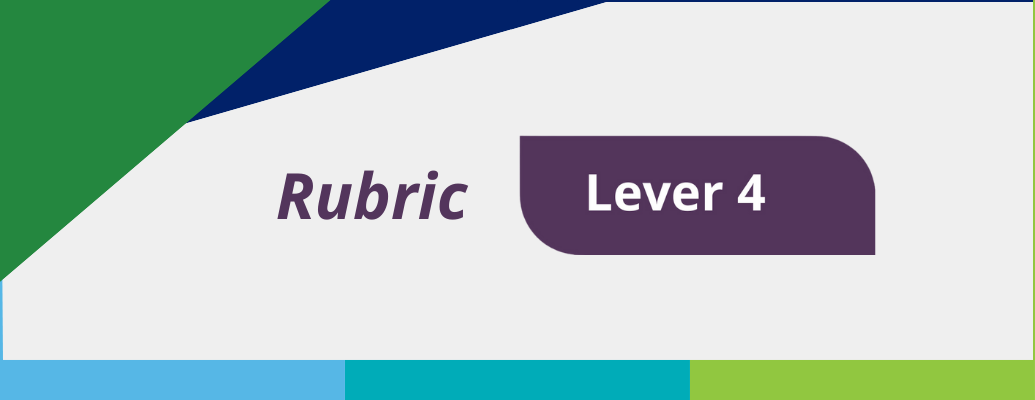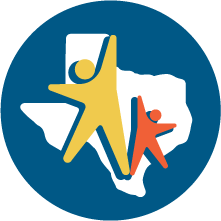
ESSENTIAL ACTION: Objective-driven daily lesson plans with asset-based, Linguistically Sustaining Practices, and data-driven, rigorous, hands-on scaffolded instruction.
Limited and inconsistent use of a lesson plan template.
Learning objectives posted, but limited reflection by students at the end of lessons.
Although expectations are there for rigorous learning through cooperative groups and higher order thinking, this type of instruction is in place in only a few DLI classrooms.
There is limited evidence of formative assessments and data for DLI teacher reflection to adjust and deliver differentiated instruction.
Lesson plan template clearly defines language and content objectives and is used by most DLI staff.
Learning objectives posted and student learning reflection is consistent in most classrooms.
Expectations are clearly established for rigorous learning through cooperative groups, higher order thinking and scaffolding, and most classrooms engage students in this type of learning.
There are formative assessments and data used by most DLI teachers to reflect, adjust, and deliver instruction that supports all students.
Unit and lesson plan templates clearly define language and content objectives and are used by all DLI staff.
Learning objectives posted. Students understand the purpose and reflect on their learning at the end of the lesson.
Instructional strategies that include rigorous on-grade level learning, higher order questioning, cooperative learning, hands-on activities, critical thinking & scaffolding are consistent across DLI classrooms.
DLI Teachers use formative assessments that yield the data necessary to reflect, adjust, and deliver instruction that meets the needs of each student.
There is limited evidence of linguistically sustaining resources or instruction in DLI programs.
There is inconsistent use of Linguistically Sustaining Practices to engage students in critical issues related to strengthening effective instructional systems for emergent bilingual students.
There is limited evidence of Linguistically Sustaining Practices using funds of knowledge to foster student voice, agency, and oral traditions.
Linguistically Sustaining Practices are inconsistently used by most DLI teachers as a collective and collaborative way of learning.
DLI program has identified linguistically sustaining resources, but not consistently used in most DLI classrooms.
Linguistically Sustaining Practices are used in most DLI classrooms engaging students in critical issues related to strengthening effective instructional systems for emergent bilingual students.
Linguistically Sustaining Practices include integration of funds of knowledge in most DLI classrooms to foster student voice, agency, and oral traditions.
Linguistically Sustaining Practices are student centered with collective and collaborative ways of learning in most DLI classrooms.
DLI program includes Linguistically Sustaining Practices that includes high-level expectations, goal setting with linguistically sustaining resources and experiences.
DLI classrooms use Linguistically Sustaining Practices to foster “critical consciousness” by addressing issues related to strengthening effective instructional systems for emergent bilingual students.
DLI classrooms use Linguistically Sustaining Practices to integrate funds of knowledge that foster student voice, agency, and oral traditions.
Linguistically Sustaining Practices are student-centered with collective and collaborative ways of learning in the majority of DLI classrooms.
DLI students are not consistently engaged through cooperative learning based on cognitive and linguistic skills.
There is limited evidence that the DLI program has clear biliteracy integration of content, language, and literacy instruction in both languages.
There is limited evidence that the DLI program has clear and consistent use of language and vocabulary cross-linguistic connections to make authentic and meaningful connections.
DLI students are not consistently engaged in contrastive analysis and metalinguistic knowledge across languages.
DLI students are engaged through cooperative learning based on cognitive and linguistic skills in most DLI classrooms.
DLI program has clear biliteracy integration of content, language, and literacy instruction in both languages in most DLI classrooms.
Although the DLI program has clear and consistent use of language and vocabulary cross-linguistic connections, it is not well known across all DLI classrooms.
In most DLI classrooms, DLI students are consistently engaged in contrastive analysis and metalinguistic knowledge across languages.
DLI students are consistently engaged through cooperative learning based on cognitive and linguistic skills.
DLI program has clear biliteracy integration of content, language, and literacy instruction in both languages.
DLI program has clear and consistent use of language and vocabulary cross-linguistic connections to make authentic and meaningful connections.
DLI students are engaged in contrastive analysis and metalinguistic knowledge across languages.
Although DLI teachers have common understanding that language is also learned through content and provides explicit language strategies to support biliteracy development, it is implemented in few DLI classrooms.
Although the DLI program supports biliteracy development with listening, speaking, reading, and writing in all content areas, it is implemented in a few DLI classrooms.
There is inconsistent integration of content TEKS, Language TEKS and Literacy TEKS in both languages across most DLI classrooms to facilitate deep and meaningful learning.
Although the DLI program recognizes the need for authentic literacy practices in the partner language that respects the structure of the language, few of the DLI classrooms address this issue correctly.
There is common understanding by most DLI teachers that language is also learned through content and provides explicit language strategies to support biliteracy development and consistently implemented in some DLI classrooms.
Although the DLI program supports biliteracy development with listening, speaking, reading, and writing in all content areas, it is not implemented in some DLI classrooms.
There is clear and consistent integration of content TEKS, Language TEKS and Literacy TEKS in both languages of instruction across most DLI classrooms to facilitate deep and meaningful learning.
Although the DLI program recognizes the need for authentic literacy practices in the partner language that respects the structure of the language, only some of the DLI classrooms address this issue correctly.
There is common understanding by DLI teachers that language is also learned through content and provides explicit language strategies to support biliteracy development and consistently implemented in DLI classrooms.
DLI program clearly supports biliteracy development in that listening, speaking, reading, and writing is incorporated by DLI teachers in all content areas and activities to build concepts and content-based language.
There is clear and consistent integration of content TEKS, Language TEKS and Literacy TEKS in both languages across DLI classrooms to facilitate deep and meaningful learning.
The DLI program recognizes the need for authentic literacy practices in the partner language that respects the structure of the language and is addressed correctly in all DLI classrooms.
The DLI program promotes an “asset-based philosophy” that uses enrichment practices to provide accelerated growth in literacy development, however there is still significant use of remedial practices such as pullout and MTSS.
DLI teachers are inconsistent with heterogeneously grouped students that are given high-quality classroom instruction, including differentiation.
In few DLI classrooms, there is evidence of effective instructional practices such as higher order thinking, scaffolding in both program languages, project based learning, and cross-linguistic connections.
The DLI program promotes an “asset-based philosophy” that uses enrichment practices to provide accelerated growth in literacy development, however there is still some use of remedial practices such as pullout and MTSS.
There is consistent use of heterogeneously grouped students given high-quality classroom instruction, including differentiation in some DLI classrooms.
In most DLI classrooms, there is evidence of effective instructional practices such as higher order thinking, scaffolding in both program languages, project based learning, and cross-linguistic connections.
The DLI program promotes an “asset-based philosophy” that uses enrichment practices to provide accelerated growth in literacy development and academic learning and there are no remedial practices such as pullout and MTSS.
DLI teachers are consistent with heterogeneously grouped students that are given on-grade level, high-quality classroom instruction and supported through the use of effective practices, including differentiated instruction.
DLI classrooms use effective instructional practices including higher-order thinking, evidence-based dual language instruction, scaffolding in both program languages, project-based learning, and cross-linguistic connections.
Limited number of DLI teachers engage students in instruction that incorporates strategic use of languages to promote high levels of language acquisition.
Few DLI teachers engage students in instruction that includes recognizing language varieties within and across program languages that include a critical analysis of the differential power and status of language varieties at the local and national level.
Few DLI teachers respect language variation and make space for it in the classroom to support academic, linguistic, and global awareness goals.
Few DLI teachers engage students in instructional activities that include community-based projects that incorporate language varieties in a meaningful way.
Some DLI teachers engage students in instruction that incorporates strategic use of languages to promote high levels of language acquisition.
Some DLI teachers engage students in instruction that includes recognizing language varieties within and across program languages that include a critical analysis of the differential power and status of language varieties at the local and national level.
Some DLI teachers respect language variation and make space for it in the classroom to support academic, linguistic, and global awareness goals.
Some DLI teachers engage students in instructional activities that include community-based projects that incorporate language varieties in a meaningful way.
DLI teachers engage students in instruction that incorporates strategic use of languages to promote high levels of language acquisition.
DLI teachers engage students in instruction that includes recognizing language varieties within and across program languages that include a critical analysis of the differential power and status of language varieties at the local and national level.
DLI teachers respect language variation and make space for it in the classroom to support academic, linguistic, and global awareness goals.
DLI teachers engage students in instructional activities that include community-based projects that incorporate language varieties in a meaningful way.
Some DLI teachers implement differentiated instruction “incorrectly” by providing varied “levels of instruction” according to student academic abilities.
Some DLI teachers implement differentiated instruction appropriately and provide “on-grade level instruction” to all students regardless of academic and linguistic level.
Teachers implement differentiated instruction appropriately by providing “on-grade level instruction” for all students regardless of academic and linguistic level and differentiate the strategy, methods, and techniques to support all students to learn at that level.
